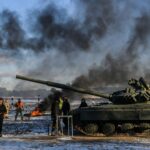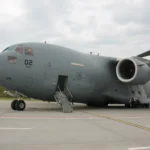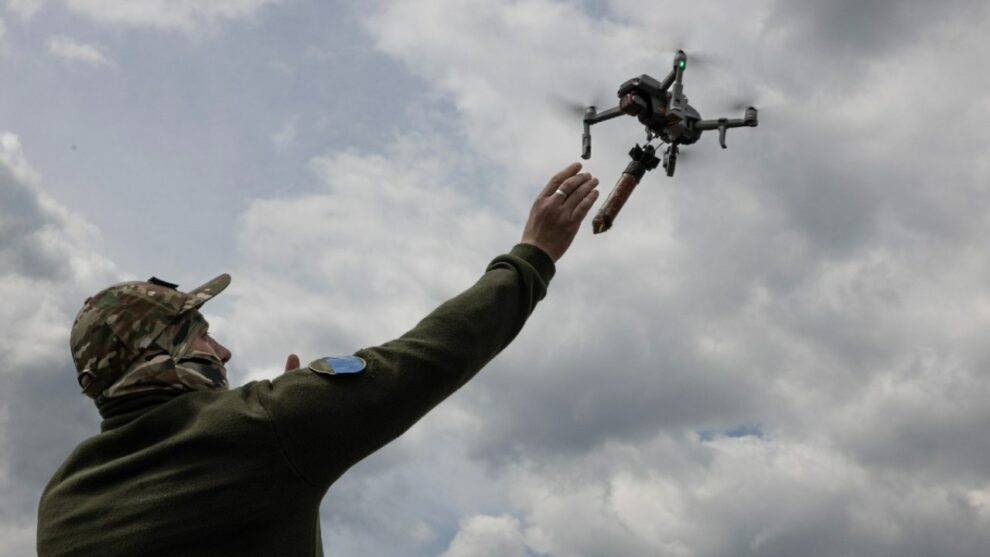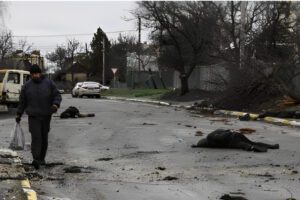Ukraine’s battlefield data is reflecting the growing role of first-person view (FPV) kamikaze drones in Kyiv’s frontline operations, as Ukrainian and Russian forces push for elusive territorial gains at the start of the long, freezing winter.
The snapshot of Ukrainian military data details the growing role of drone strikes against Russian targets along the 600-mile front, and the nature of both Ukrainian and Russian unmanned aerial vehicle (UAV) operations.
On several days in November, between 50 percent and 70 percent of all damaged or destroyed Russian equipment was attributed to FPV drones, according to figures published by analyst Andrew Perpetua on X, formerly known as Twitter. On November 13, the FPV proportion of successful strikes was even higher, at around 84 percent.
Perpetua’s most recent update for November 23 attributed 67 percent of destroyed or damaged Russian systems to FPV drones.

Ivan Stupak—a former officer in the Security Service of Ukraine who provided the data—told Newsweek that the data indicates the FPV drone’s emergence as a weapon of “mass destruction,” adding that his military sources suggest Perpetua’s data corresponds to the frontline reality.
“It’s the next chapter of war,” Stupak—who is now an adviser to the Ukrainian parliament’s national security, defense and intelligence committee—added.
Fighting in recent weeks has been particularly fierce in areas where the Ukrainians are advancing in the Kherson and Zaporizhzhia oblasts, as well as around the Donetsk city of Avdiivka, where Moscow’s troops are grinding forwards.
Along the banks of the Dnieper River—called the Dnipro in Ukrainian—drones are facilitating Kyiv’s efforts to maintain and expand small bridgeheads across the broad waterway, which for a year has formed an imposing barrier to any Ukrainian advance.
Ukrainian forces on the Russian-occupied east bank of the river are currently fighting within three miles of the M-14 highway that serves as the backbone for all of occupied southern Ukraine, known as Moscow’s “land corridor” connecting Crimea to western Russia.
“It’s a very short distance for FPV drones,” Stupak said, noting that even basic systems have ranges of more than six miles.
More generally, “the numbers are telling, and it is clear that there is potential to reach the average level of 75-90 percent in destroyed/damaged [Russian targets] daily,” Stupak said. “It is obvious,” he added, that Ukraine should expand its drone production program for broader frontline use.
Newsweek was unable to independently verify the data and has contacted the Russian defense ministry by email to request comment.
The FPV figures show that Russian drones are also inflicting losses on the Ukrainian side. Armored personnel carriers, an American-made M777 howitzer, and a radio relay system are among the systems damaged or destroyed by Russian UAVs in November.
The U.S. howitzer was among the targets hit by the Lancet kamikaze drones that have become so feared by Ukrainian soldiers.
Drones have been one of the most important weapons in Russia’s full-scale invasion of Ukraine. UAVs are used in massive numbers for bombing missions, direct kamikaze strikes, and reconnaissance—including spotting targets for artillery and guiding long-range fire onto ground targets.
Both sides have also repeatedly used longer-range drones to bombard civilian and infrastructure targets.
The Royal United Services Institute estimated earlier this year that Ukraine is losing around 10,000 drones per month, a reflection of their significance in daily combat. In August, Ukraine’s “drone tsar” told Newsweek that Kyiv considers unmanned aircraft central to its future battlefield capabilities and will expand its production and training programs as such.
“In a year, Ukrainian drone’s industry produces different types of drones: FPV [first person view], strike, bombers, large-radius drones,” Vice Prime Minister Mykhailo Fedorov said. “Prior to the full-scale invasion, Ukraine’s industry has been focused mostly on air reconnaissance. It’s a major shift.”

“The important thing is that UAVs allow us to save the lives of our military,” Fedorov added. “So, we need as many drones as possible to cover the whole frontline. We believe that in this war, it’s the drones who should fight and die, not people.”
Oleksandr Kamyshin, the minister who oversees Ukraine’s defense industry, told a conference in October that by the end of 2023, Kyiv wants to be producing “dozens of thousands” of drones each month. “And that’s something we grow even faster than conventional warfare ammunition and warfare weapons.”
Ukraine’s counteroffensive drive in the Zaporizhzhia region has ground to a halt amid extensive Russian defenses. But the Kherson front—relatively dormant compared with the mechanized battlefields to the east—is posing the Russian command serious problems as 2023 draws to a close.
Kyiv’s small bridgeheads on the east bank are within 50 miles of the entrance to the occupied Crimean Peninsula, which retired Lieutenant General Ben Hodges has told Newsweek represents the “decisive” battlefield of the decade-long Moscow-Kyiv war.
Stupak suggested that Ukrainian troops might look to break out of their Dnieper footholds and drive as far as the Black Sea port of Skadovsk, some 35 miles to the south. Doing so, he said, could cut off Russian forces defending the Kinburn Spit and put Crimea under “fire control” of Kyiv’s U.S.-made HIMARS.
Source : Newsweek















